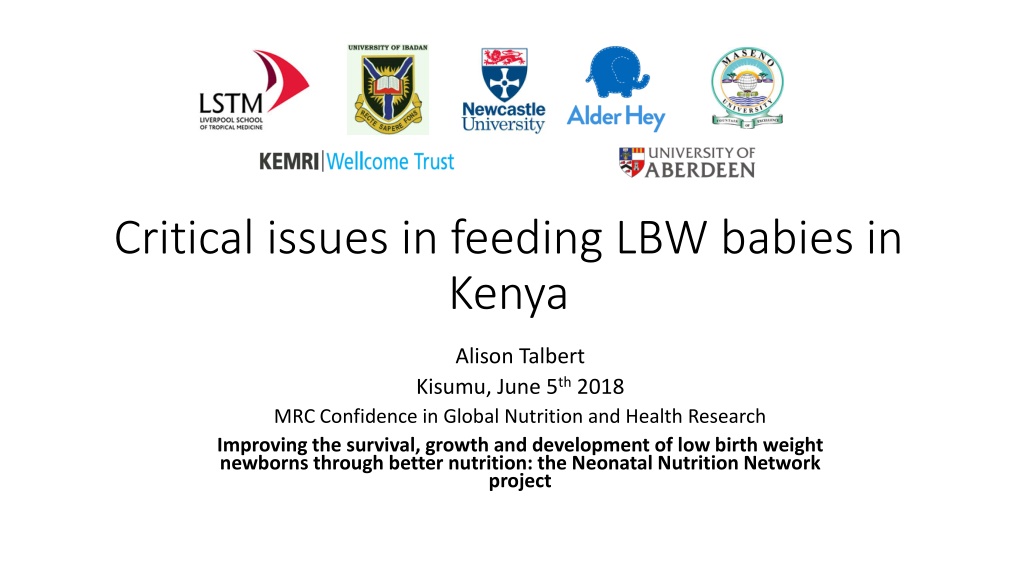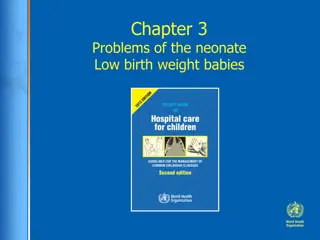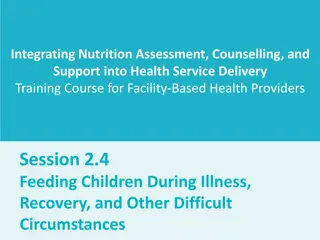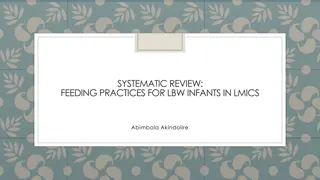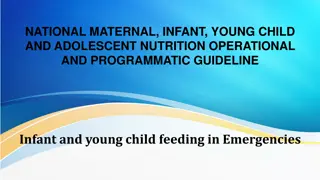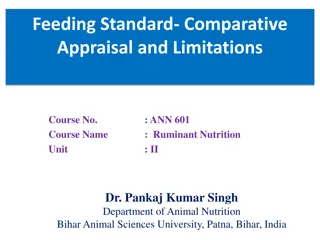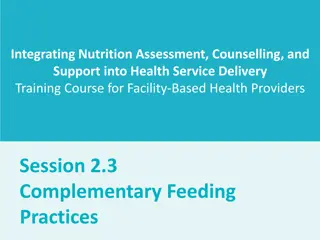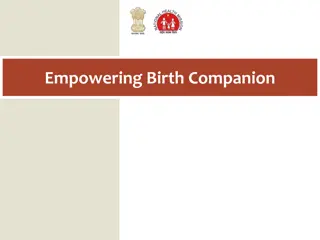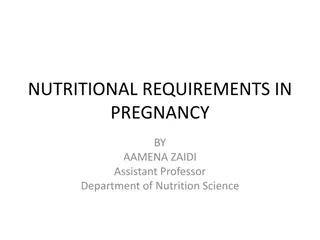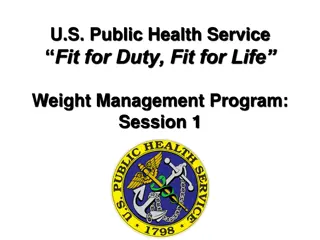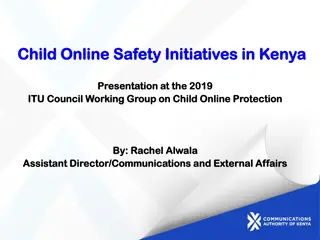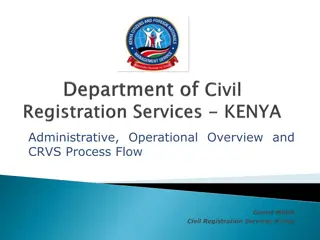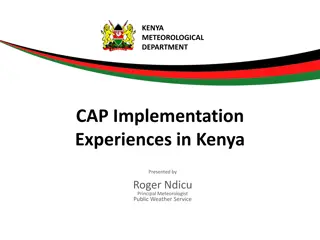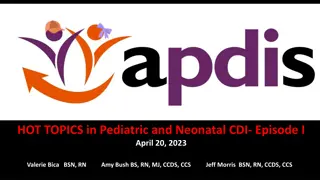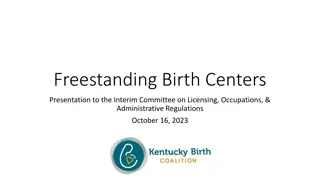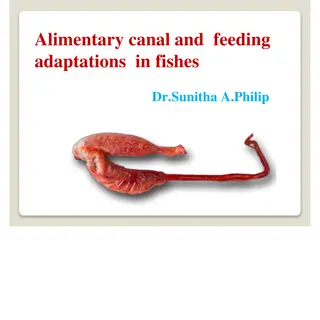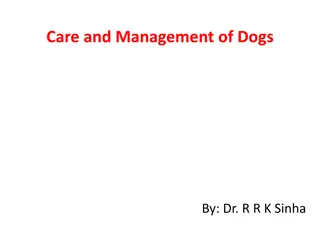Challenges in Feeding Low Birth Weight Babies in Kenya
Addressing critical issues in feeding low birth weight babies in Kenya, including the lack of accurate birth weight measurements, preterm birth rates, and the risks associated with formula milk feeding. Strategies such as promoting expressed breastmilk and supporting mothers in neonatal units are discussed, highlighting the need for enhanced nutrition management and breastfeeding support in healthcare settings.
Download Presentation

Please find below an Image/Link to download the presentation.
The content on the website is provided AS IS for your information and personal use only. It may not be sold, licensed, or shared on other websites without obtaining consent from the author. Download presentation by click this link. If you encounter any issues during the download, it is possible that the publisher has removed the file from their server.
E N D
Presentation Transcript
Critical issues in feeding LBW babies in Kenya Alison Talbert Kisumu, June 5th2018 MRC Confidence in Global Nutrition and Health Research Improving the survival, growth and development of low birth weight newborns through better nutrition: the Neonatal Nutrition Network project
How many LBW babies are there in Kenya? Country profile for Kenya* reported that birth weight was measured in only 47% of births Estimated 12% of births are preterm: 193,000 births per year Low birth weight estimated at 8% of births (World Bank 2009) * www.EveryPreemie.org
Place of birth (Kenya statistical abstract 2017) 1,000,000 875,101 900,000 800,000 711,105 700,000 600,000 Health facility 500,000 Home 400,000 300,000 200,000 159,494 73,223 100,000 0 2013 2016
What/how to feed low birth weight babies? No published trials from Kenya Cochrane review (Quigley and McGuire 2014) formula milk increases risk of necrotizing enterocolitis Kenya guidelines advise giving expressed breastmilk (EBM) Donor milk not available yet acceptability studies conducted in Nairobi
Supporting mothers to express EBM for LBW High patient to nurse ratio: 7-15 patients per nurse in Nairobi neonatal units (Murphy 2018) Few nurses trained in breastfeeding support Hospital nutritionists management of malnutrition Breastfeeding peer supporters in hospital are accepted by mothers and nurses where do they fit into health systems? (Mwangome IBAMI and SIBs studies)
Criteria for discharge from hospital (Kilifi) When baby is gaining weight on breastfeeding alone. Maintaining temperature in open cot. Mother is confident with feeding.
Hospital discharge is delayed by failure to breastfeed Prolonged stay increases risk of hospital acquired infections Home hygiene conditions not optimal for supplementation with breastmilk substitutes constraints in water and fuel supply Poverty high cost of formula milk relative to incomes
Vitamin & mineral supplementation post- discharge for VLBW infants WHO 2011 guidelines on Optimal feeding of low birth weight infants in low and middle income countries recommends supplementation for VLBW infants of: Iron and vitamin D to 6 months Calcium and phosphorus during first few months of life but not available in Kenyan multivitamin syrup formulations
Feeding problems of LBW babies born at home Timing of first feed - attitudes towards giving colostrum Prelacteal feeds cultural practices sugar water, coconut water Plan B if perceived insufficient breastmilk cows milk, maize porridge Postnatal visits babies brought for BCG immunization by grandmothers Missed opportunities at clinics for counselling on infant feeding
Post-discharge follow up of LBW Low birth weight is a risk factor for acute malnutrition in infants under 6 months (MAMI) Tools are being developed for screening for nutritional vulnerability in infants under 6 months (includes LBW) Need to be simplified and integrated into existing clinics
